Investigation of Color Reproduction on Linen Fabrics when Printing with Mimaki TX400-1800D Inkjet with Pigment TP250 Dyes
Abstract
1. Introduction
2. Methodology of Investigation
3. Results of Research on Color Properties
4. Conclusions
- Color reproduction when printing both 4 and 16 passes is very similar. The difference between the values of ΔE of the change in color characteristics between the different passages does not exceed 3;
- The number of applied paint layers has the greatest influence on the change in lightness (L*);
- The best color reproduction is achieved with two coats of dye;
- When printing with 1 layer of ink, the color reproduction is the worst;
- Printing in different passes setting does not increase color reproduction, but printing in a smaller passes number increases printing speed a lot;
- At layers 4–5 of paint, the change of color characteristic ΔE increases and colors are reproduced less effectively than at dye layers 2–3;
- In prints on bleached linen fabrics, the colors are best reproduced on the thickest linen fabric and the worst on the thinnest;
- On melange linen fabrics, the worst colors are reproduced on the thinnest linen fabric and the color change in its surface without printing is the largest;
- In the study of natural and melange linen fabrics, the color change in the surface without pressure has a significant influence on color reproduction.
Author Contributions
Funding
Institutional Review Board Statement
Informed Consent Statement
Data Availability Statement
Conflicts of Interest
References
- Strand, E.A.; Frei, K.M.; Gleba, M.; Mannering, U.; Nosch, M.L.; Skals, I. Old textiles–new possibilities. Eur. J. Archaeol. 2010, 13, 149–173. [Google Scholar] [CrossRef]
- Buchert, J.; Pere, J.; Johansson, L.S.; Campbell, J.M. Analysis of the surface chemistry of linen and cotton fabrics. Text. Res. J. 2001, 71, 626–629. [Google Scholar] [CrossRef]
- El-Hennawi, H.M.; Shahin, A.A.; Rekaby, M.; Ragheb, A.A. Ink jet printing of bio-treated linen, polyester fabrics and their blend. Carbohydr. Polym. 2015, 118, 235–241. [Google Scholar] [CrossRef] [PubMed]
- Baaka, N.; Ticha, M.B.; Haddar, W.; Amorim, M.T.P.; Mhenni, M.F. Upgrading of UV protection properties of several textile fabrics by their dyeing with grape pomace colorants. Fibers Polym. 2018, 19, 307–312. [Google Scholar] [CrossRef]
- Bernava, A.; Reihmane, S. Influence of modification methods on colour properties of a linen fabric dyed with direct dyes. Proc. Est. Acad. Sci. 2018, 67, 131–137. [Google Scholar] [CrossRef]
- Burkinshaw, S.M.; Salihu, G. The role of auxiliaries in the immersion dyeing of textile fibres: Part 1 an overview. Dye. Pigment. 2019, 161, 519–530. [Google Scholar] [CrossRef]
- Jabar, J.M.; Ogunmokun, A.I.; Taleat, T.A.A. Color and fastness properties of mordanted Bridelia ferruginea B dyed cellulosic fabric. Fash. Text. 2020, 7, 1–13. [Google Scholar] [CrossRef]
- Özgüney, A.T.; Bozacı, E.; Demir, A.; Özdoğan, E. Inkjet printing of linen fabrics pretreated with atmospheric plasma and various print pastes. AATCC J. Res. 2017, 4, 22–27. [Google Scholar] [CrossRef]
- Rekaby, M.; Abd-El Thalouth, J.I.; Abd El-Salam, S.H. Improving reactive ink jet printing via cationization of cellulosic linen fabric. Carbohydr. Polym. 2013, 98, 1371–1376. [Google Scholar] [CrossRef]
- Liang, Y.; Liu, X.; Fang, K.; An, F.; Li, C.; Liu, H.; Qiao, X.; Zhang, S. Construction of new surface on linen fabric by hydroxyethyl cellulose for improving inkjet printing performance of reactive dyes. Prog. Org. Coat. 2021, 154, 106179. [Google Scholar] [CrossRef]
- Tan, P.; Tong, L.; Steven, G.P. Modelling for predicting the mechanical properties of textile composites—A review. Compos. Part A Appl. Sci. Manuf. 1997, 28, 903–922. [Google Scholar] [CrossRef]
- Kan, C.W.; Yuen, C.W.M.; Lam, Y.L. Effect of enzyme treatment and dyeing on the mechanical properties of linen. Coloration Technol. 2009, 125, 269–276. [Google Scholar] [CrossRef]
- Miller, S.A. Natural fiber textile reinforced bio-based composites: Mechanical properties, creep, and environmental impacts. J. Clean. Prod. 2018, 198, 612–623. [Google Scholar] [CrossRef]
- Kim, H.J. Effect of water absorption fatigue on mechanical properties of sisal textile-reinforced composites. Int. J. Fatigue 2006, 28, 1307–1314. [Google Scholar] [CrossRef]
- Ding, Y.; Shamey, R.; Chapman, L.P.; Freeman, H.S. Pretreatment effects on pigment-based textile inkjet printing–colour gamut and crockfastness properties. Coloration Technol. 2019, 135, 77–86. [Google Scholar] [CrossRef]
- Hufenbach, W.; Gude, M.; Böhm, R.; Zscheyge, M. The effect of temperature on mechanical properties and failure behaviour of hybrid yarn textile-reinforced thermoplastics. Mater. Des. 2011, 32, 4278–4288. [Google Scholar] [CrossRef]
- Nguyen, T.H.; Vu, X.H.; Larbi, A.S.; Ferrier, E. Experimental study of the effect of simultaneous mechanical and high-temperature loadings on the behaviour of textile-reinforced concrete (TRC). Constr. Build. Mater. 2016, 125, 253–270. [Google Scholar] [CrossRef]
- Sharma, A. Eco-friendly Textiles: A boost to sustainability. Asian J. Home Sci. 2013, 8, 768–771. [Google Scholar]
- Javoršek, D.; Javoršek, A. Colour management in digital textile printing. Coloration Technol. 2011, 127, 235–239. [Google Scholar] [CrossRef]
- Osaki, K. High quality color reproduction on jacquard silk textile from digital color images. AUTEX Res. J. 2003, 3, 173–179. [Google Scholar]
- ORSHA Lnen Mill. Available online: https://linenmill.by/product-category/tkani/bazovye-tkani/ (accessed on 16 January 2021).
- BARBIERI Electronic. Portable Spectrophotometer for Professional Digital Printing. Available online: http://www.barbierielectronic.com/en/digital-imaging/1-0.html (accessed on 16 January 2021).
- British Standards Document BS EN ISO 105-J01 Textiles. Test for Colour Fastness. General Principles for Measurement of Surface Colour. Available online: https://doi.org/10.3403/02058086U (accessed on 28 February 2021).
- Sidaravičius, D.J. Densitometric and Colorimetric Control of Printing Materials and Prints; Technika: Vilnius, Lithuania, 2012. [Google Scholar]
- Crowle, G. Effects of Cotton Structure and Surface Interactions on Dye Uptake. Ph.D. Thesis, Deakin University, Geelong, Australia, 2017. [Google Scholar]
- Electronics for Imaging, Inc. Delta E, Delta H, Delta T: What Does It Mean? Available online: https://help.efi.com/fieryxf/KnowledgeBase/color/Delta%20E_H_T.pdf (accessed on 26 February 2021).
- Javoršek, D.; Weingerl, P.; Starešinič, M. Digital Textile Printing Using Color Management. In Textiles: History, Properties and Performance and Applications; Mondal, M.I.H., Ed.; Nova Science Publishers, Inc.: New York, NY, USA, 2014; pp. 53–80. [Google Scholar]
- Savvidis, G.; Karanikas, E.; Nikolaidis, N.; Eleftheriadis, I.; Tsatsaroni, E. Ink-jet printing of cotton with natural dyes. Coloration Technol. 2014, 130, 200–204. [Google Scholar] [CrossRef]
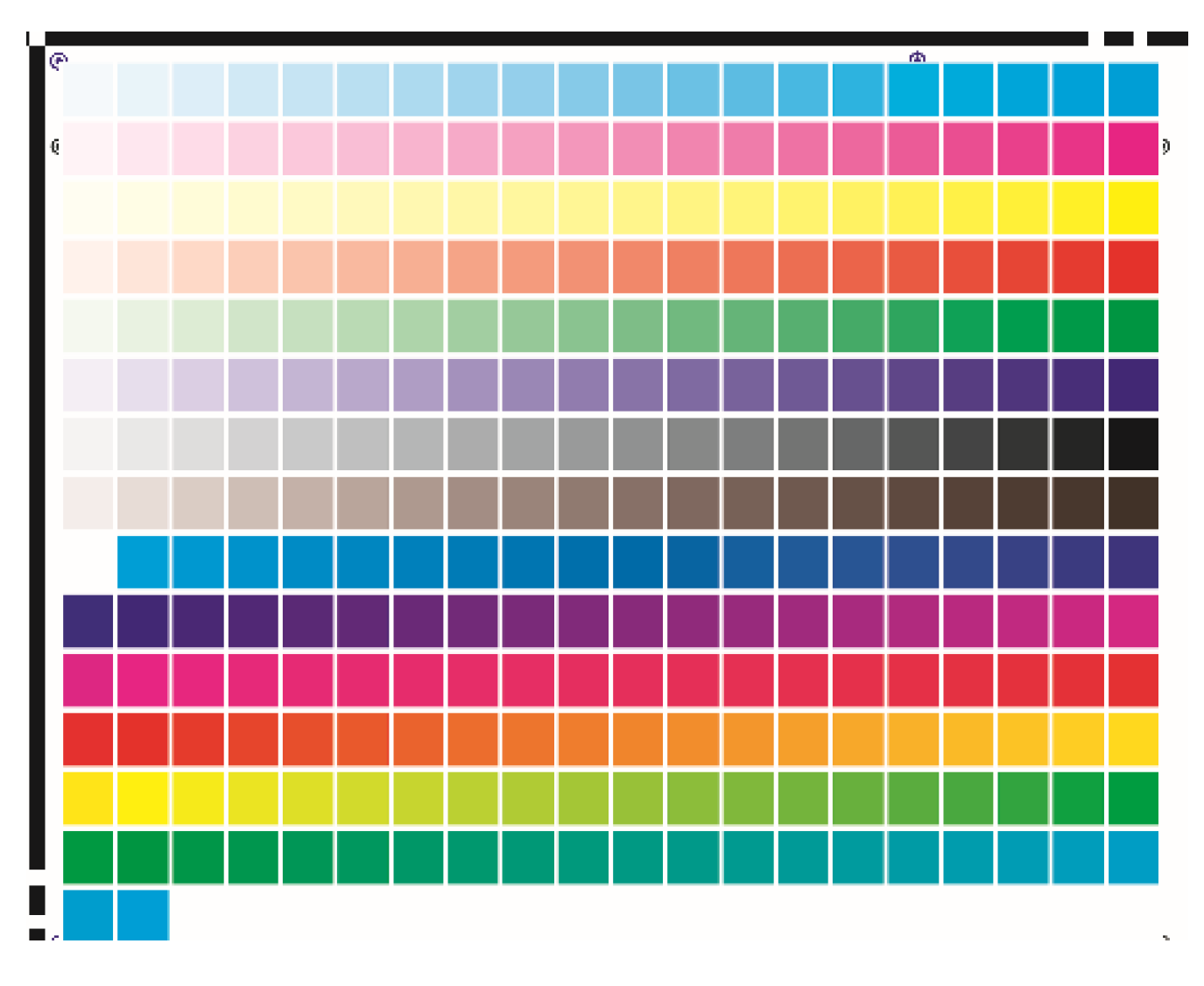
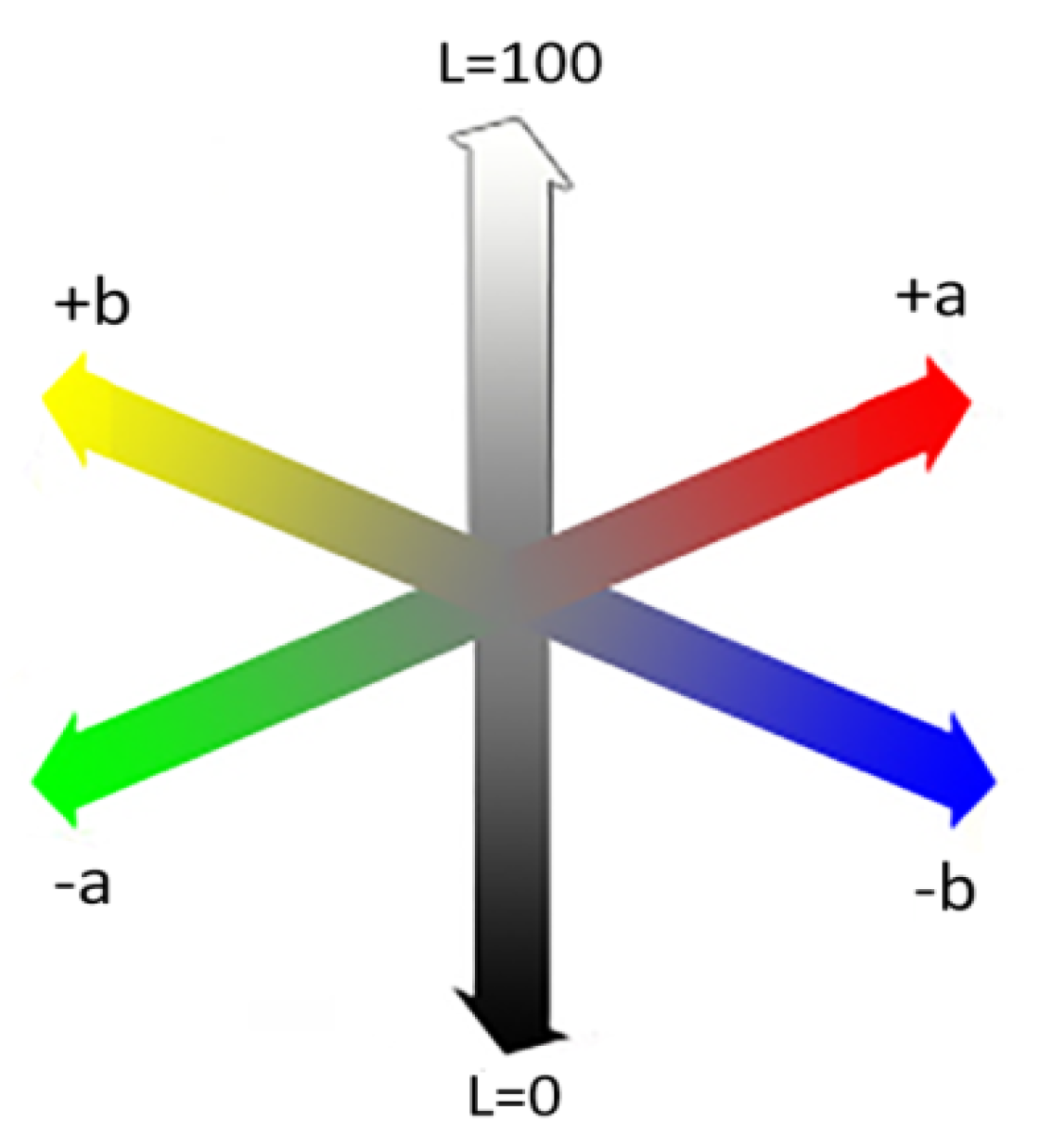
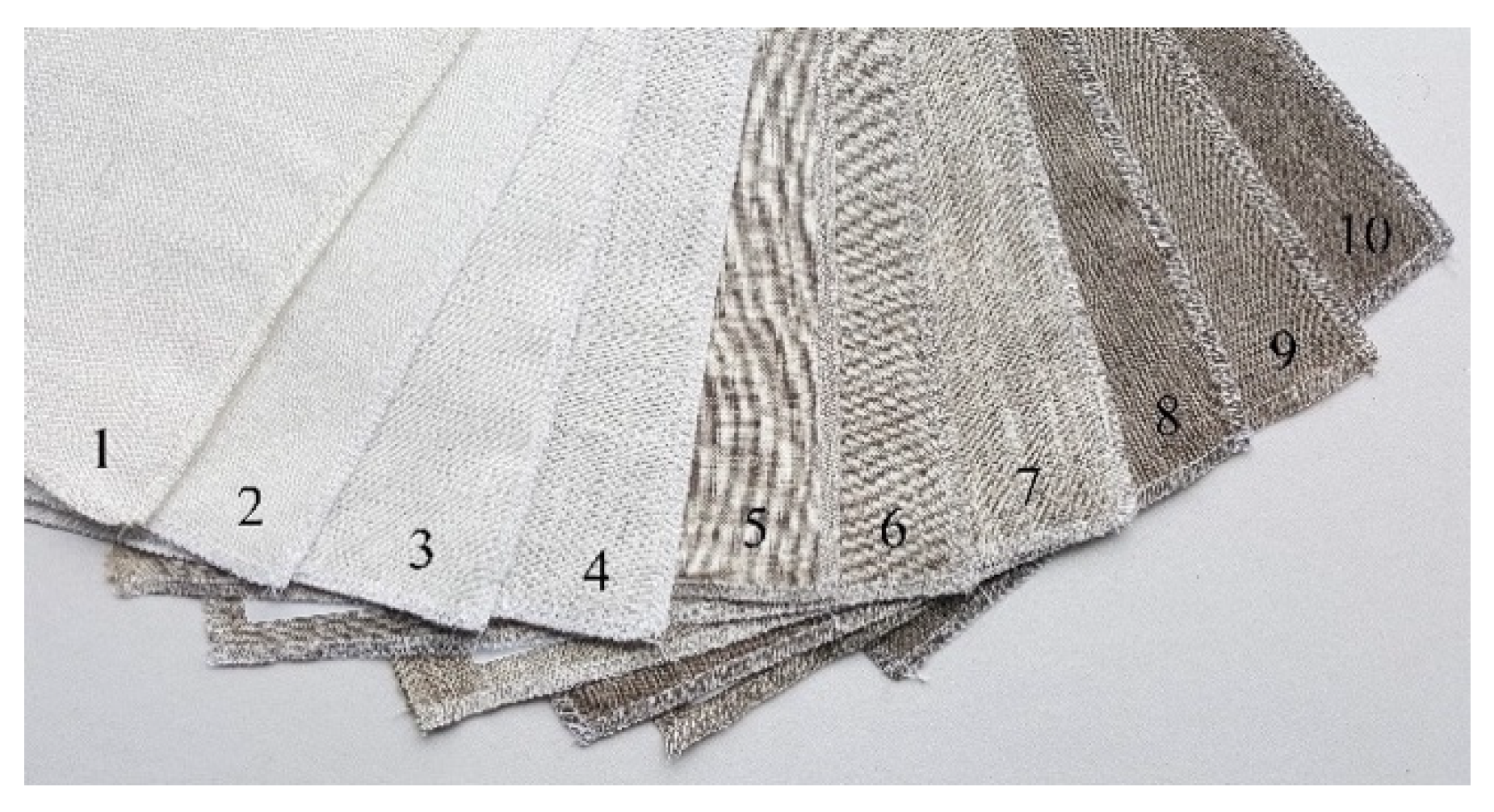
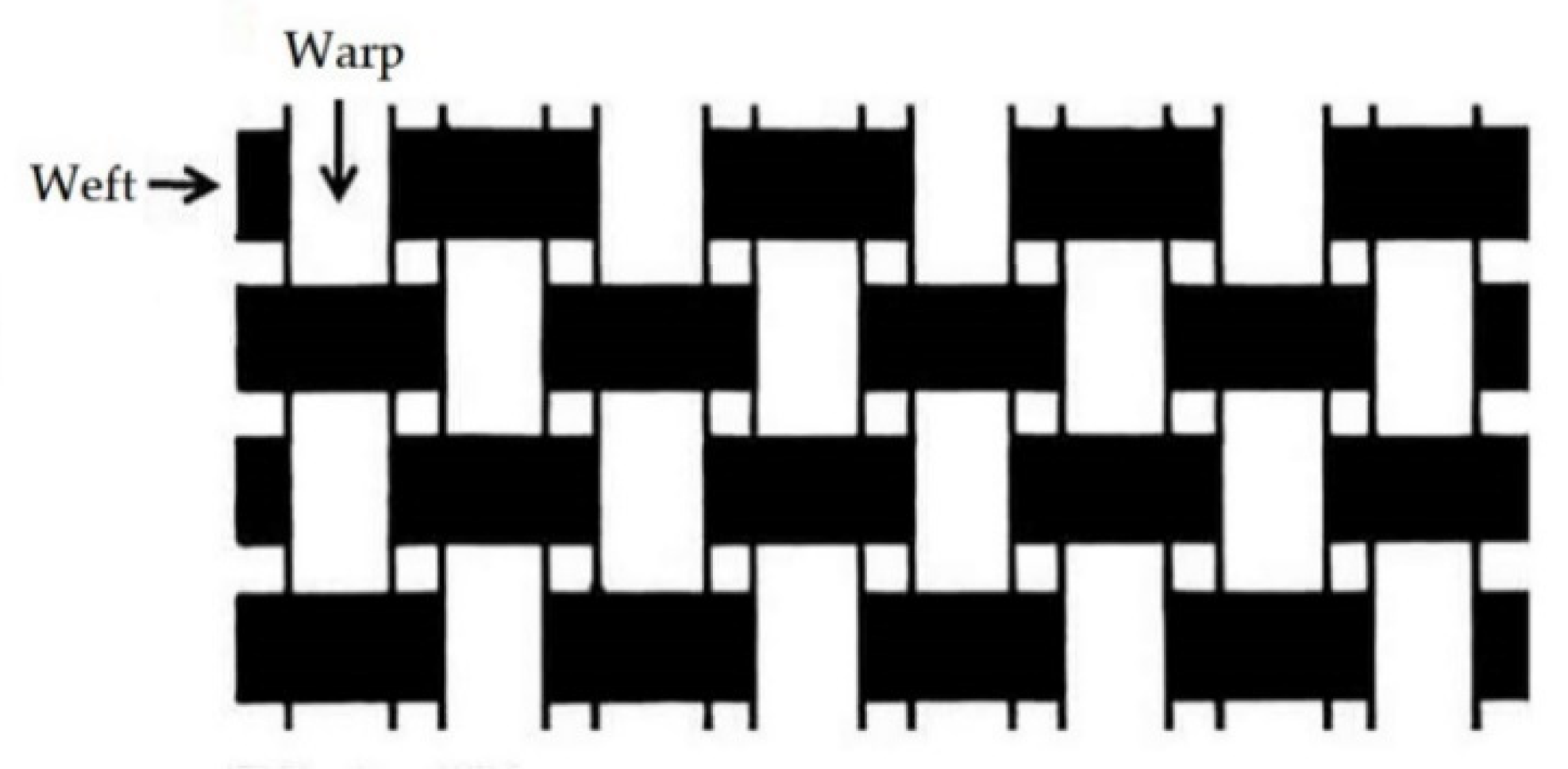
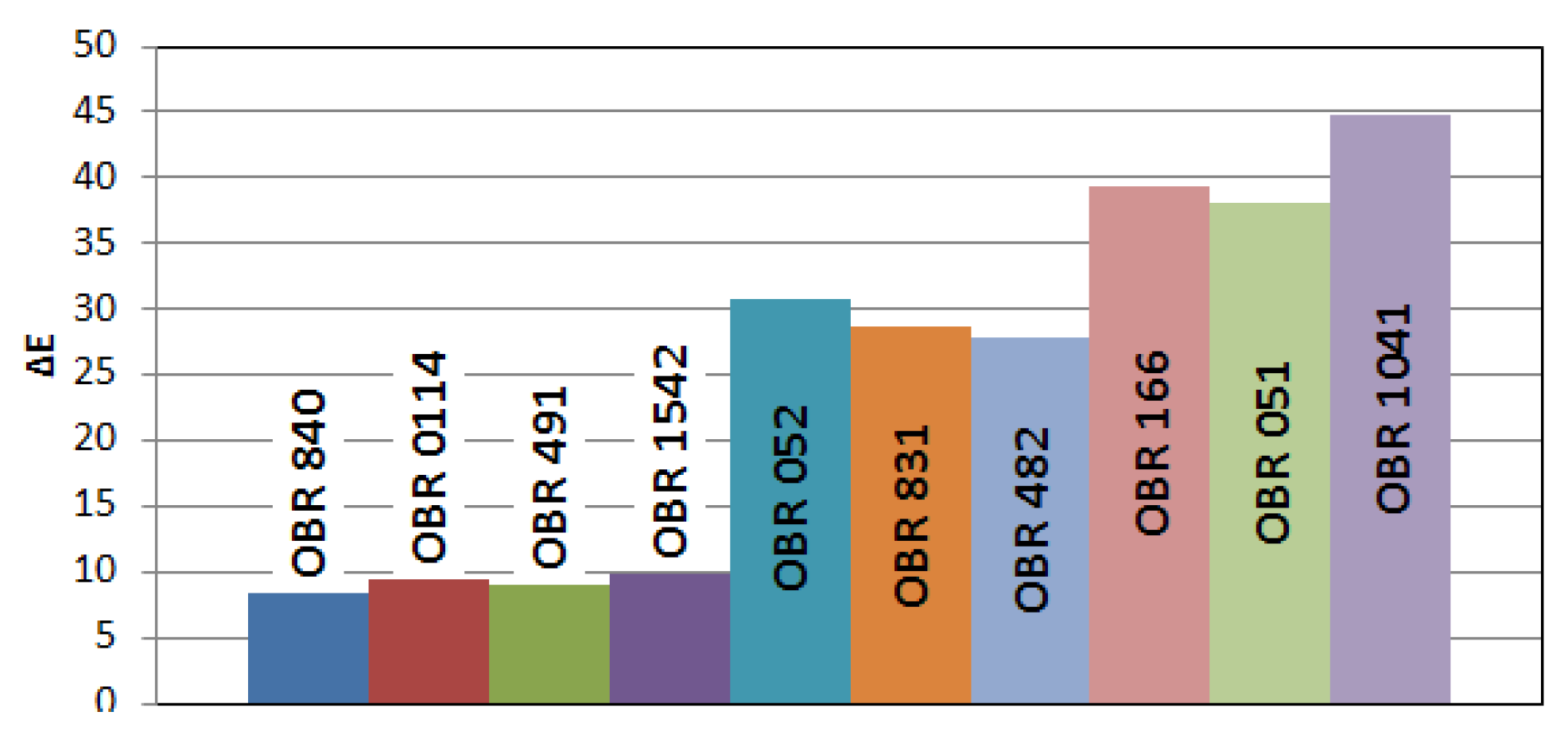
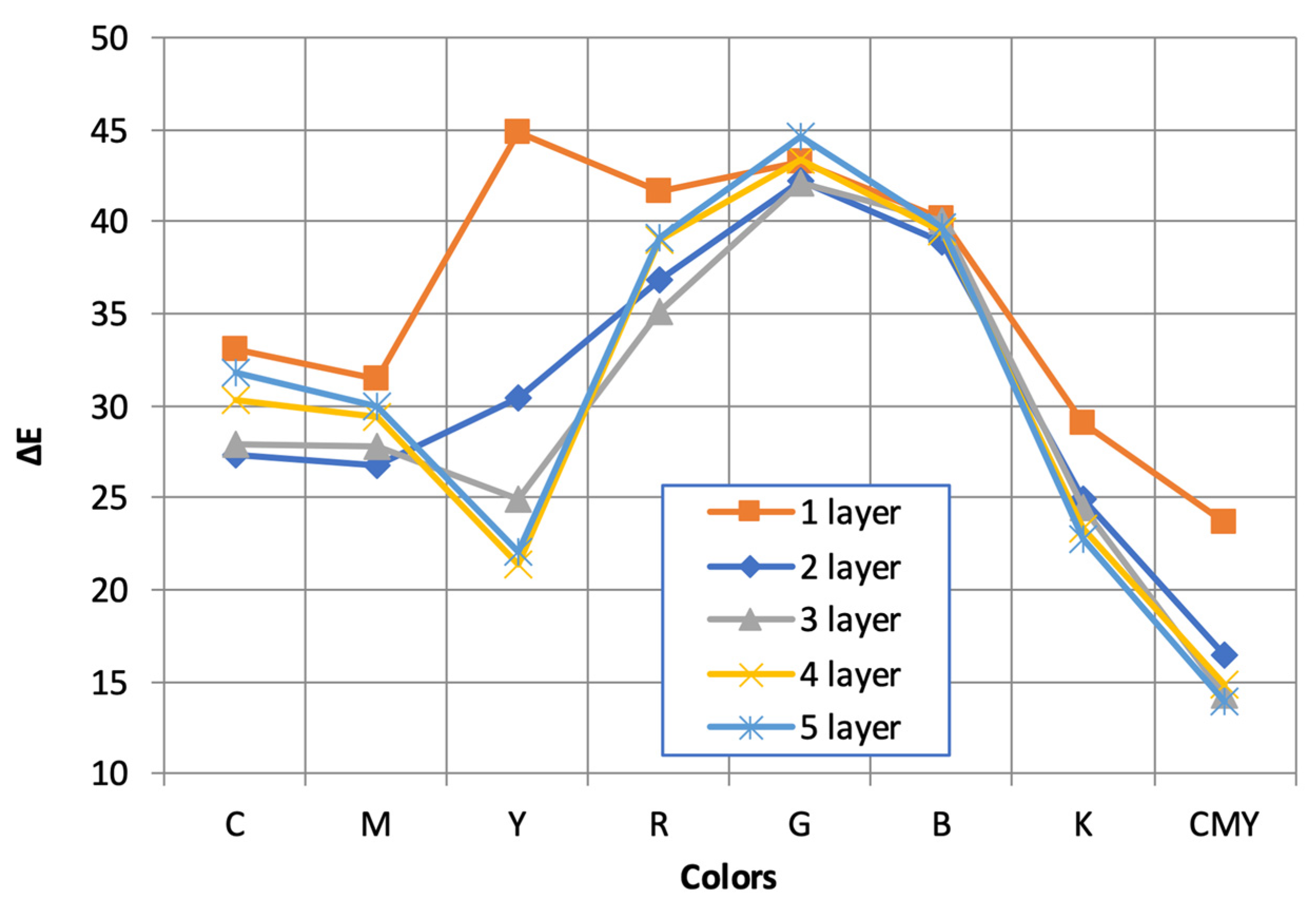






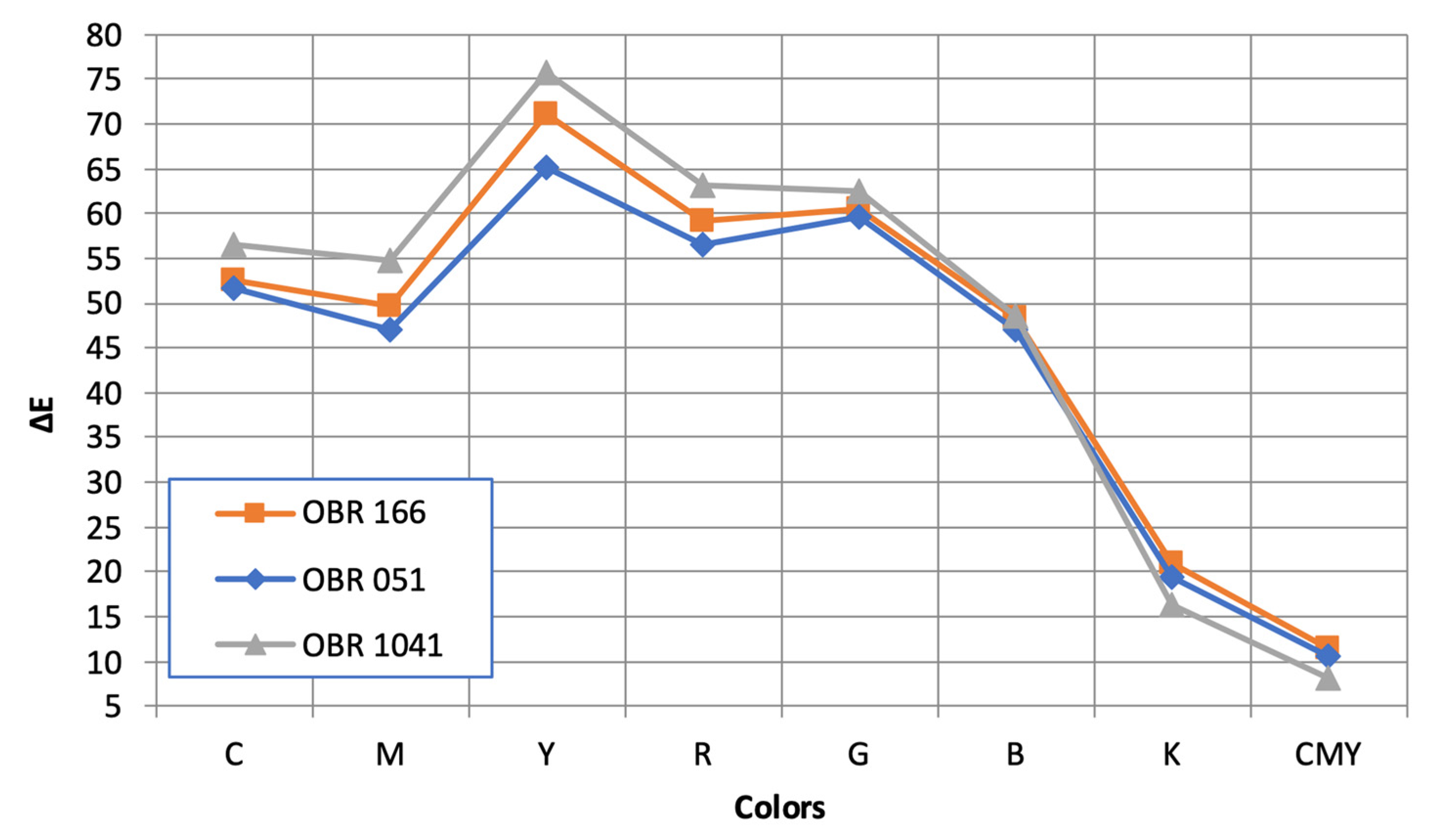

| No. | Types of Linen Fabric | Sample Article | Grams Per Square Metre (g/m2) | Thickness of Thread (tex) | Threads q-ty Per 10 cm | ||
|---|---|---|---|---|---|---|---|
| Warp | Weft | Warp | Weft | ||||
| 1 | Bleached | OBR 840 | 140 | 38 | 38 | 199 | 150 |
| 2 | Bleached | OBR 0114 | 170 | 42 | 42 | 193 | 194 |
| 3 | Bleached | OBR 491 | 190 | 56 | 56 | 176 | 142 |
| 4 | Bleached | OBR 1542 | 245 | 87 | 87 | 156 | 118 |
| 5 | Melange | OBR 052 | 150 | 38 | 38 | 199 | 182 |
| 6 | Melange | OBR 831 | 190 | 56 | 56 | 176 | 142 |
| 7 | Melange | OBR 482 | 280 | 110 | 110 | 142 | 102 |
| 8 | Natural | OBR 166 | 125 | 30 | 30 | 226 | 174 |
| 9 | Natural | OBR 051 | 150 | 38 | 38 | 199 | 184 |
| 10 | Natural | OBR 1041 | 240 | 83 | 83 | 160 | 112 |
| Color | L* | a* | b* |
|---|---|---|---|
| C | 62 | −44 | −50 |
| M | 52 | 81 | −7 |
| Y | 95 | −6 | 95 |
| R | 52 | 74 | 54 |
| G | 57 | −74 | 30 |
| B | 25 | 25 | −55 |
| K | 12 | 2 | 0 |
| CMY | 23 | 1 | −2 |
| Meaning | |
|---|---|
| 0–1 | Normally invisible difference |
| 1–2 | Very small difference, only obvious to trained eye |
| 2–3.5 | Medium difference, also obvious to untrained eye |
| 3.5–5 | Obvious difference |
| >5 | Very obvious difference |
Publisher’s Note: MDPI stays neutral with regard to jurisdictional claims in published maps and institutional affiliations. |
© 2021 by the authors. Licensee MDPI, Basel, Switzerland. This article is an open access article distributed under the terms and conditions of the Creative Commons Attribution (CC BY) license (http://creativecommons.org/licenses/by/4.0/).
Share and Cite
Tofan, T.; Stonkus, R.; Jasevičius, R. Investigation of Color Reproduction on Linen Fabrics when Printing with Mimaki TX400-1800D Inkjet with Pigment TP250 Dyes. Coatings 2021, 11, 354. https://doi.org/10.3390/coatings11030354
Tofan T, Stonkus R, Jasevičius R. Investigation of Color Reproduction on Linen Fabrics when Printing with Mimaki TX400-1800D Inkjet with Pigment TP250 Dyes. Coatings. 2021; 11(3):354. https://doi.org/10.3390/coatings11030354
Chicago/Turabian StyleTofan, Tim, Rimantas Stonkus, and Raimondas Jasevičius. 2021. "Investigation of Color Reproduction on Linen Fabrics when Printing with Mimaki TX400-1800D Inkjet with Pigment TP250 Dyes" Coatings 11, no. 3: 354. https://doi.org/10.3390/coatings11030354
APA StyleTofan, T., Stonkus, R., & Jasevičius, R. (2021). Investigation of Color Reproduction on Linen Fabrics when Printing with Mimaki TX400-1800D Inkjet with Pigment TP250 Dyes. Coatings, 11(3), 354. https://doi.org/10.3390/coatings11030354






